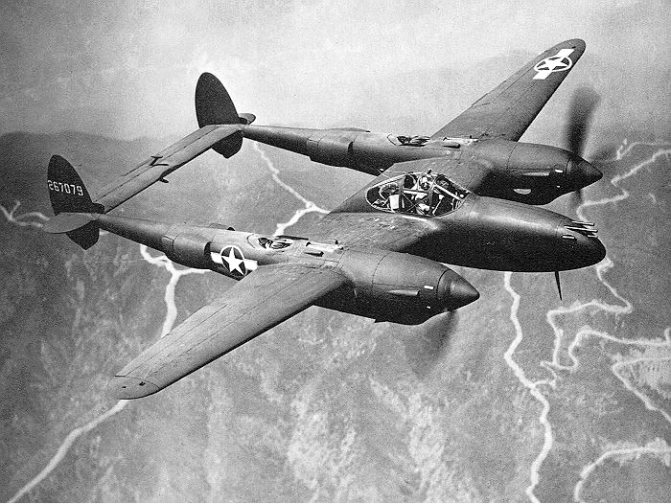
Reflection of the Philippines 1944-1945
Landing barges carrying soldiers approach the beaches of Leyte on October 20, 1944. The eastern coast of the island was chosen for the landing, and four divisions in two corps immediately landed on it - all from the US Army. The Marine Corps, with the exception of the artillery unit, did not take part in operations in the Philippines.
The largest Allied naval operation in the Pacific was the Philippine campaign, which lasted from autumn 1944 to summer 1945. their physical loss both from a prestigious and psychological point of view. In addition, Japan was practically cut off from its resource base in Indonesia, Malaya and Indochina, and the Americans received a solid base for the final jump - to the Japanese home islands. The Philippine campaign of 1944-1945 was the pinnacle of the career of Douglas MacArthur, an American "five-star" general, one of the two great commanders of the Pacific theater of operations.
Douglas MacArthur (1880–1962) graduated summa cum laude from West Point in 1903 and was assigned to the Corps of Engineers. Immediately after graduating from the academy, he went to the Philippines, where he built military installations. He was a sapper company commander at Fort Leavenworth in the USA and traveled with his father (major general) to Japan, Indonesia and India in 1905-1906. In 1914, he took part in an American punitive expedition to the Mexican port of Veracruz during the Mexican Revolution. He was awarded the Medal of Honor for his activities in the Veracruz region and was soon promoted to major. He participated in the hostilities of the First World War as chief of staff of the 42nd Infantry Division, rose to the rank of colonel. From 1919-1922 he was commander of the West Point Military Academy with the rank of brigadier general. In 1922, he returned to the Philippines as commander of the Manila Military Region and then commander of the 23rd Infantry Brigade. In 1925 he became a major general and returned to the United States to take command of the 1928 Corps in Atlanta, Georgia. From 1930-1932, he served again in Manila, Philippines, and then, as the youngest ever, he took the position of Chief of Staff of the US Army in Washington, while rising to the rank of four-star general. Since XNUMX, Major Dwight D. Eisenhower has been General MacArthur's aide-de-camp.
In 1935, when MacArthur's tenure as Chief of Staff of the US Army ended, the Philippines gained partial independence, although it remained somewhat dependent on the United States. The first post-independence Philippine president, Manuel L. Quezon, a friend of Douglas MacArthur's late father, approached the latter for help organizing the Philippine military. MacArthur soon arrived in the Philippines and received the rank of Philippine marshal, while remaining an American general. At the end of 1937, General Douglas MacArthur retired.
In July 1941, when President Roosevelt called the Army of the Philippines into federal service in the face of the threat of war in the Pacific, he reappointed MacArthur to active duty with the rank of lieutenant general, and in December he was promoted to the permanent rank of general. MacArthur's official function is Commander of the United States Army in the Far East - United States Army Forces in the Far East (USAFFE).
After the dramatic defense of the Philippines on March 12, 1942, a B-17 bomber flew MacArthur, his wife and son, and several of his staff officers to Australia. On April 18, 1942, a new command, the Southwest Pacific, was created and General Douglas MacArthur became its commander. He was responsible for the operations of allied forces (mostly American) from Australia through New Guinea, the Philippines, Indonesia to the coast of China. It was one of two commands in the Pacific; it was an area with a large number of land areas, so a general of the ground forces was placed at the head of this command. In turn, Admiral Chester W. Nimitz was in charge of Central Pacific Command, which was dominated by maritime areas with relatively small archipelagos. General MacArthur's troops made a long and stubborn march into New Guinea and the Papua Islands. In the spring of 1944, when the Japanese Empire had already begun to burst at the seams, the question arose - what next?
Future Action Plans
In the spring of 1944, it was already clear to everyone that the moment of the final defeat of Japan was approaching. In the field of action of General MacArthur, the invasion of the Philippines was originally planned, and then on Formosa (now Taiwan). The possibility of attacking the Japanese-occupied coast of China before invading the Japanese islands was also considered.
At this stage, a discussion arose as to whether it was possible to bypass the Philippines and attack Formosa directly as a convenient base from which to attack Japan. This option was defended by adm. Ernest King, Chief of Naval Operations in Washington (i.e. the de facto Commander-in-Chief of the US Navy) and - provisionally - also General George C. Marshall, Chief of Staff of the US Army. However, most commanders in the Pacific, primarily General MacArthur and his subordinates, considered an attack on the Philippines inevitable - for many reasons. Adm. Nimitz leaned towards the vision of General MacArthur, not the vision of Washington. There were many strategic, political and prestigious reasons for this, and in the case of General MacArthur there were also accusations (not without reason) that he was guided by personal motives; The Philippines was almost his second home.
